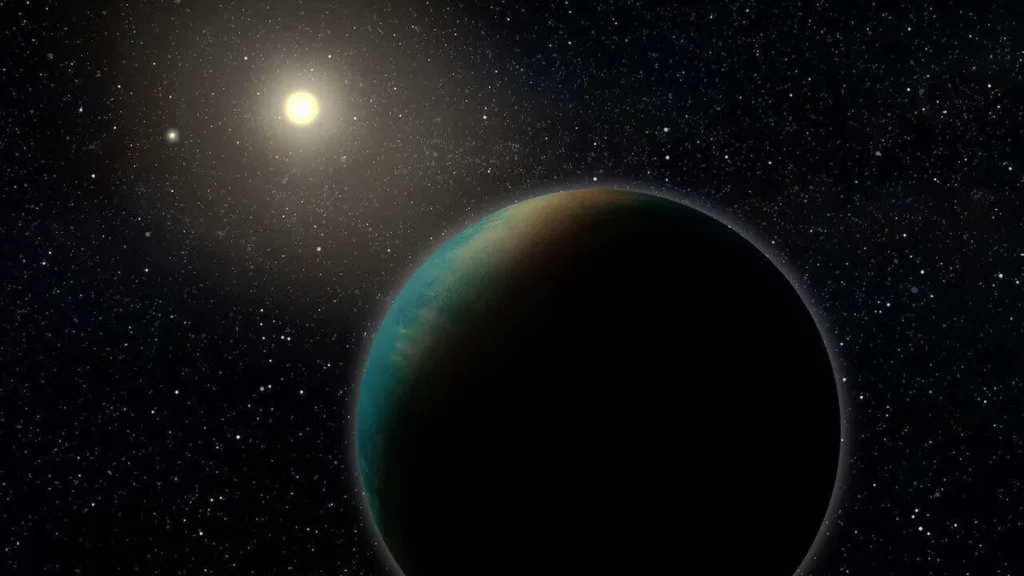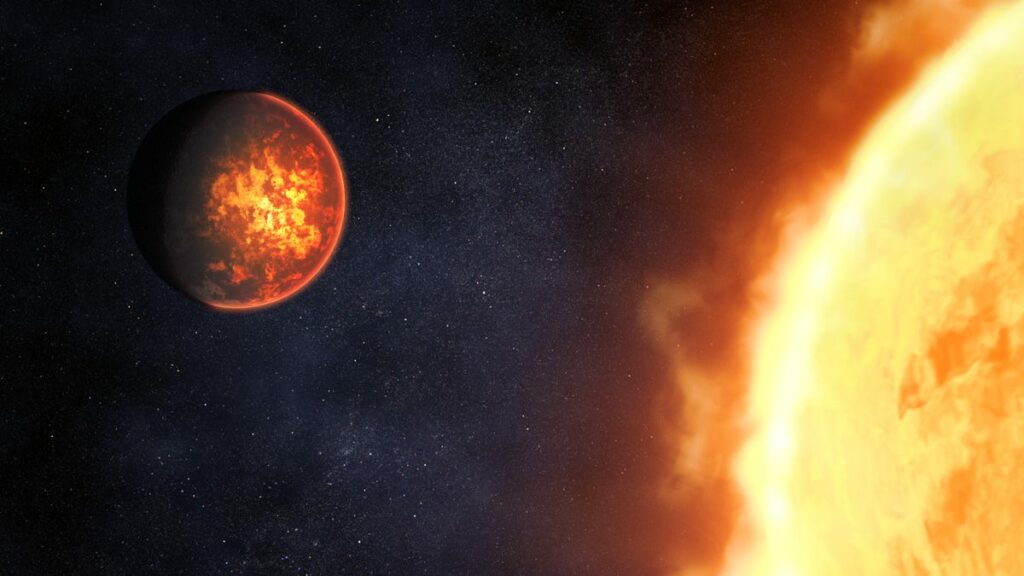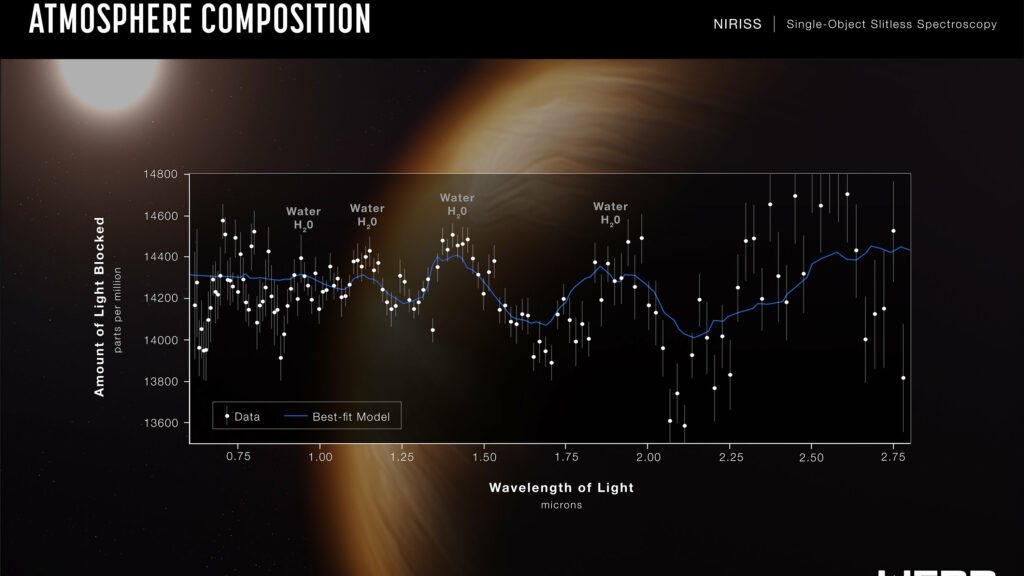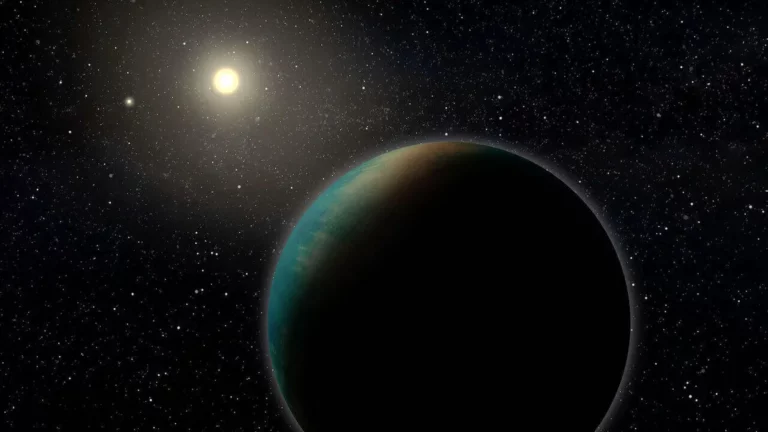Potential ‘Ocean World’ Discovered 100 Light-Years Away From Earth
An exoplanet tracker has created a side quest for NASA’s James Webb Space Telescope.
It’s incredible what the NASA Transiting Exoplanet Survey Satellite does. Imagine going back in time 1,000 years and telling someone how scientists in the future would have a device that can find extraterrestrial worlds floating at distances beyond what the human mind can comprehend.

Benoit Gougeon, Université de Montréal.
TESS is that.
This space-based technology has discovered literally hundreds of exoplanets since 2018. We can see one that resembles a rugby ball, another that appears to be covered with lava oceans, and even an orb that appears to be raining sideways glass.
International scientists revealed on Wednesday that one of these alien lands being diligently pursued by TESS may be coated in a layer of water, the essence of life.
I don’t know about you, but the Interstellar moment where Cooper landed on a planet with waves the size of buildings is coming to mind.
According to the team’s study, which was just published this month in The Astronomical Journal, this potential “ocean world” is located around 100 light-years from Earth, circling within a binary star system tucked under the Draco constellation. Its designation is TOI-1452 b, and it is thought to be around five times as big, about 70% larger than our planet, rotate at the rate of seven Earth days, and about the right temperature for liquid water to exist on its surface.

The surprising thing is that, according to NASA, its density seems to be compatible with having an extremely deep ocean. Alternatively, it might be a massive rock with little to no atmosphere or an atmosphere made of hydrogen and helium.
Charles Cadieux, the study’s lead author and a doctoral student at the University of Montreal who is also a member of the institute’s Institute for Research on Exoplanets, declared in a press release on Wednesday that TOI-1452 b is one of the best candidates for an ocean planet that we have discovered to date. Its mass and radius point to a far lower density than one might anticipate for a planet like Earth, which is mostly composed of metal and rock.
If the theory that TOI-1452 b is suitable for Poseidon’s dreams is true, it would be analogous to several locations in our own solar system. It is believed that Enceladus, Saturn’s brilliant and icy moon, has a worldwide saltwater ocean underneath an ice cover. Additionally, the biggest moon in our solar system, Ganymede, one of Jupiter’s brilliant allies, has its own frozen watery expanse.
Sounds like a job for the Webb Space Telescope
Even though scientists have been finding exoplanets in record numbers recently, there is still a special delight when they do so.
This is so that we may take use of the James Webb Space Telescope, a further incredible device that sits a million miles from Earth and unlocks cosmic information concealed as infrared radiation.
And, in a stroke of luck, TOI-1452 b is situated in an area of the sky that the telescope can view all year round, according to the news release.
René Doyon, head of the University of Montréal’s iREx, author of the latest study, and member of the team behind one of the JWST’s primary pieces of equipment, stated in the announcement that “our observations with the Webb Telescope will be vital to better understanding TOI-1452 b.” “We will schedule time on Webb as soon as we can to examine this unusual and fascinating world,” they said.
Doyon and his coworkers want to use JWST to investigate this exoplanet’s atmosphere in further detail and see whether it really is a fantastic world with liquid water. The team claims that it is one of the few known temperate worlds that displays traits typical of an ocean planet. This is why ruminating about it is so enticing.

NASA
Furthermore, because the star TOI-1452 b orbits in the binary star system is considerably smaller than our sun and doesn’t travel too far from the planet of interest, it is likely to have a cold temperature. The authors of the study claim that this gas ball is located around 2.5 times further away from its star companion than the sun is from Pluto.
Fascinatingly, the scenario as a whole was so complicated that TESS need assistance in order to compose the account of TOI-1452 b. Other cutting-edge tools were needed, such as the PESTO camera from the Observatoire du Mont-Megantic, which would likewise wow our fictitious ancient audience. That gadget specializes in the electromagnetic spectrum’s red region.
The OMM was essential in determining the nature of the signal and determining the planet’s radius, according to Cadieux. “This wasn’t a standard check. We have to confirm that the TESS signal was indeed brought on by an exoplanet revolving around TOI-1452, the larger of the two stars in that binary system.”
JWST, may the world (under the sea) be your oyster.
Source:CNET
Do not forget to share your opinion with us to provide you with the best posts !





0 Comments